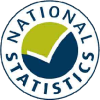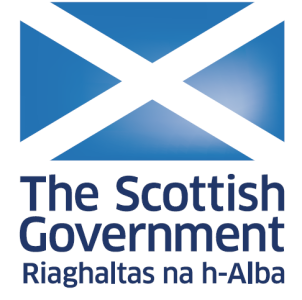Higher education student enrolments and qualifications obtained at higher education providers in the United Kingdom 2015/16
This SFR includes: Summary | Introduction | Key points | Regional breakdown | Tables | Notes and FAQs | Definitions | View a printable version of this SFR
Summary
Our Statistical First Release contains interactive charts which require Javascript to be enabled. Without Javascript, you can find static versions of these charts below.
This Statistical First Release (SFR) provides details of student enrolments and qualifications obtained by higher education (HE) students at HE providers in the United Kingdom (UK) for the academic year 2015/16.

- Apart from a drop in 2012/13, coinciding with changes in tuition fee arrangements, there has been an upward trend in first year first degree enrolments.
- Other undergraduate first year enrolments have strongly declined since 2008/09.
- First year enrolments onto all postgraduate courses have shown little overall change in ten years.

- The number of first degree qualifications obtained has increased with the exception of 2014/15, likely to be related to the drop in first year enrolments in 2012/13.
- Up to 2011/12, the number of postgraduate taught qualifications obtained has increased. From 2011/12, numbers have stabilised.
Introduction
As in previous years, this SFR focuses on all publicly funded UK HE providers and the University of Buckingham. Some further information is provided on HE students at further education colleges (Ref. Table 1b) in order to illustrate the totality of higher education provision at publicly funded UK providers.
An increasing number of alternative providers are becoming a part of the HESA community. Experimental statistics on study patterns at alternative providers will be reported on in a separate release in February 2017.
This SFR also includes information from the HESA Aggregate offshore record (Ref. Table 13). This record captures students studying wholly outside the UK who are either registered with the reporting HE provider or who are studying for an award of the reporting HE provider.
Readers should be aware that data definitions sometimes change over time and this can affect the validity of time series comparisons. Any significant changes have been explained in the definitions.
Key points - enrolments (All UK HE providers)
- The total number of HE enrolments at UK HE providers stood at 2,280,830 in 2015/16, an increase of 1%, and 14,750 in overall numbers, from 2014/15. This overall increase is not due to an increase in first year enrolments. A probable reason for the increase is that the reduced cohort of first degree students who enrolled in their first year in 2012/13 would have mostly completed their qualifications in 2014/15.
- Full-time first degree enrolments accounted for 80% of all full-time higher education enrolments and grew by 3%, substituting for the decline in other full-time qualifications.
- Other undergraduate (including Foundation degree, HNC/HND and Professional Graduate Certificate in Education (PGCE)) enrolments showed a decrease every year from 2011/12 to 2015/16. Between 2014/15 and 2015/16 this decrease was most prominent among foundation degree enrolments, with a drop of 15%.
- Part-time enrolments across all levels of study (except HNC/HND) also showed a year on year decrease over the same period (Ref. Table 1 and Chart 3).
- There were a further 187,115 HE enrolments at further education colleges in 2015/16 compared to 189,670 in 2014/15. This data is presented in Table 1b disaggregated by mode and level of study. All further figures presented in this SFR exclude HE enrolments at further education colleges.

Total enrolments
The total number of HE enrolments at UK HE providers stood at 2,280,830 in 2015/16, an increase of 1% and 14,750 in overall numbers, from 2014/15. For the first time in several years, 2015/16 saw a small increase in HE student enrolments compared to 2014/15 (Ref. Table 1).
The sharpest year on year decrease in enrolments was observed between 2011/12 and 2012/13, at 6%. This decrease coincided with changes in tuition fee arrangements. 2012/13 was also the academic year which had the lowest total number of first year enrolments during the five-year period shown, at 972,255 (Ref. Table 2).
Level of study
In 2015/16, the total number of postgraduate enrolments stood at 532,975 showing a 1% drop from 2014/15; 318,070 of these were first years, showing no percentage change from the previous year.
Total undergraduate enrolments decreased every year between 2011/12 and 2014/15, but increased by 1% between 2014/15 and 2015/16. First year undergraduate enrolments showed no percentage change between 2014/15 and 2015/16, although within this cohort, first year first degree enrolments increased by 3% and first year other undergraduate enrolments decreased by 9% (Ref. Table 1, Table 2 and Chart 3).
Mode of study
1,740,540 of all enrolments were full-time, showing a 3% increase since 2014/15 while full-time first year enrolments increased by 2% over the same period.
540,285 enrolments were part-time showing a decrease of 5% since 2014/15. This continues the decreasing trend in part-time numbers over the time series shown (between 2011/12 and 2015/16 there was an overall 30% decrease), although it should be noted that the decrease in part-time enrolments began in 2009/10. The 5% decrease between 2014/15 and 2015/16 was made up of a 7% decrease in part-time undergraduates and a 2% decrease in part-time postgraduates. A similar pattern was observed for part-time first year enrolments over the same time series, decreasing by 4% between 2014/15 and 2015/16.
The continuing decline in part-time enrolments compared to full-time enrolments further reduced the proportions studying part-time. In 2011/12, 31% of all enrolments were part-time. By 2014/15 this had reduced to 25% of all enrolments, and in 2015/16 part-time enrolments accounted for just 24% of all enrolments. This trend was mirrored in part-time first year enrolments where 35% of first year enrolments were part-time in 2011/12, compared to 27% in 2014/15, and 26% in 2015/16 (Ref. Table 1, Table 2 and Chart 3).
Domicile

In 2015/16, UK domiciled students accounted for 81% of all enrolments at UK HE providers (the same as in 2014/15 and 2013/14), 6% were other European Union (EU) domiciled (5% in 2014/15) and the remaining 14% came from countries outside the EU (the same as in 2014/15).
The overall number of other EU domiciled students increased by 2% from 2014/15 (from 124,575 to 127,440). There was no percentage change in the number of student enrolments from outside the EU. Over the same period, the number of UK domiciled students increased by 1% (from 1,829,195 to 1,842,315) (Ref. Table 1).
Proportions of students from outside the UK varied by both level and mode of study in 2015/16. UK domiciled students made up the majority of enrolments for all modes and levels of study with the exception of full-time postgraduates, where 46% were non-EU domiciled (46% in 2014/15) (Ref. Chart 4).
Proportions of students from outside the UK also varied across the four administrations. HE providers in England had the greatest proportion of non-EU domiciled students at 14%, while providers in Scotland had the greatest proportion of other EU domiciled students at 9%. At HE providers in Wales, there was a large decrease of 11% in the number of non-EU domiciled enrolments between 2014/15 and 2015/16, although over the same time period, Scotland had a 3% increase in the number of non-EU domiciled enrolments. Northern Ireland experienced a decrease in non-EU numbers of 7% from 2014/15. England had an overall increase in the number of other EU domiciled enrolments, increasing by 3% from 2014/15 (Ref. Table 1a and Chart 4).
Subject


Chart 5a shows absolute changes in first year higher education student enrolments by subject area. It shows that among first year undergraduate enrolments, there has been a large increase in the number of first year undergraduates enrolling in Science subjects. Increases were seen in all Science subjects with the exception of Biological sciences, which decreased by 910 between 2014/15 and 2015/16. Education also saw a large drop in first year undergraduate enrolments, with 955 less than in 2014/15. History saw a decrease too, with 560 fewer first year undergraduate enrolments in 2015/16 compared to 2014/15.
In terms of first year postgraduate enrolments, Chart 5a shows Subjects allied to medicine increased by an additional 4,415 in 2015/16 compared to 2014/15. This has pushed up the overall number of first year postgraduate enrolments in Science subjects by 4,375 this year. Business & administrative studies and Education showed the largest absolute decrease in first year postgraduate enrolments, with a drop of 2,975 and 2,770 respectively.
Percentage changes in first year enrolments by subject, as shown in Chart 5b, shows that the greatest increase in first year postgraduate student enrolments between 2014/15 and 2015/16 was observed in Veterinary science, at 130%. Correspondingly, the greatest decrease in first year postgraduate numbers was observed in Agriculture & related subjects, at 28%. With both subject areas containing small numbers of first year postgraduate enrolments, one HE provider was mostly responsible for these percentage changes. In addition to experiencing a genuine increase in Veterinary science first year enrolments, the provider also undertook a data cleansing exercise that saw modules previously coded as Agriculture & related subjects in 2014/15 become coded as Veterinary science in 2015/16.
Chart 5b shows for first year undergraduate enrolments the greatest percentage increase was observed in Veterinary science, at 11%. This increase was mostly due to one HE provider recently setting up a new School of Veterinary Medicine. Although its first cohort of undergraduates enrolled in 2014/15, the 2015/16 intake of first year undergraduate students was much larger than that of the previous year. Over the same time period, undergraduate first year enrolments in Education decreased by 3% (Ref. Table 4a, Chart 5a and Chart 5b).
There was an overall increase of 2% among full-time first year enrolments in 2015/16 and a corresponding 2% increase in Science subjects. The proportion studying Science subjects in 2015/16 was 42% for first year full-time enrolments (42% in 2014/15). For part-time first year enrolments the overall number decreased by 4% while the number studying Science subjects increased by 1%. Therefore, the proportion of part-time first years studying Science subjects increased from 47% in 2014/15 to 49% in 2015/16 (Ref. Table 4a).
Person characteristics
Table 6a and Table 6b include data on the sex, age, disability status and ethnicity of full-time and part-time enrolments by level of study and subject area. 57% of all enrolments were female. The gender split differed by mode of study: 55% of full-time enrolments were female compared to 60% of part-time enrolments. 52% of all full-time student enrolments were aged 20 and under compared to 6% for part-time enrolments. For full-time enrolments the age profile differed by level of study: 62% of full-time undergraduates were aged 20 and under compared to 1% of full-time postgraduates, and 50% of full-time postgraduates were aged 21 to 24. The majority, 61%, of part-time enrolments were aged 30 and over, for undergraduates this was 56% and for postgraduates 69%. The percentage known to have a disability was the same among full-time and part-time enrolments, at 11%. Of the UK domiciled full-time enrolments with known ethnicity, 24% were BME (Black and Minority Ethnic) compared to 17% of UK domiciled part-time enrolments (Ref. Table 6a and Table 6b).
Cross border flows
Chart 6 - UK domiciled first year HE student enrolments by domicile and location of HE provider 2015/16

Chart 6 shows the cross border flows of UK domiciled first year enrolments by the country of domicile and country of provider (excluding those studying at The Open University). Across all regions the majority of students stay in their home country, although those domiciled from Wales and Northern Ireland were more likely to cross borders than those from England and Scotland. 28% of first year students from Wales were enrolled at HE providers in England, and 21% of first year students from Northern Ireland were enrolled at HE providers in England.
EU countries of domicile (excluding the UK)
Chart 7 shows the 2015/16 ranking of the top 10 EU countries of domicile other than UK and the change since 2011/12. Chart 8 shows the same information based on non-EU countries of domicile. Please note that the axes for Charts 7 and 8 do not start at 0, and so care should be taken when interpreting these charts.

Across all UK HE providers, for all student enrolments, there was a 4% decrease in the numbers from other EU countries between 2011/12 and 2015/16, although there was an increase from 124,575 enrolments from other EU countries in 2014/15 to 127,440 in 2015/16.
Over the five-year period, among the top 10 countries, Italy has seen the largest percentage increase in the number of student enrolments, at 52%. Ireland saw the largest percentage decrease over the same time period, with a drop of 32%. This drop was even larger among first year student enrolments domiciled from Ireland with a decrease of 36% (Ref. Table 8, Table 8a and Chart 7).
Non-EU countries of domicile

The number of student enrolments from China was much larger than from any other overseas country. As such, Chart 8 shows a dashed line to denote a break in the axis. In 2015/16, the number of student enrolments domiciled from China was 12,500 more than in 2011/12. In 2011/12, there were 78,715 student enrolments from China, and 29,900 from India.
In terms of student enrolments from non-EU countries, there was a small decrease between 2014/15 and 2015/16 (less than 1%). Over the same period for first year student enrolments from non-EU countries, there was a 1% decrease. In comparison, statistics published by the Home Office in December 2016, which compare the year ending September 2016 with the year ending September 2015, show there were 3% fewer study-related visas granted, a drop to 207,522. Over the same period, the number of university-sponsored study visa applications fell by 1% to 167,208 (source: Home Office)
Over the five-year period, among the top 10 countries, Hong Kong has seen the largest percentage increase in the number of student enrolments, at 48%. However this increase was not as noticeable amongst first year enrolments from Hong Kong, at 27%. India saw the largest percentage decrease, at 44% between 2011/12 and 2015/16. In numbers, this meant that in 2015/16, the number of student enrolments domiciled from India was 13,150 less than in 2011/12. It is worth noting however, that the decline in student enrolments domiciled from India began a year earlier, in 2010/11 (Ref. Table 9, Table 9a and Chart 8).
Key points – qualifications obtained (all UK HE providers)
The total number of qualifications gained has shown an overall increase in numbers between 2011/12 and 2012/13 before decreasing by 1% in 2013/14 and by a further 4% in 2014/15. Between 2014/15 and 2015/16 there was no percentage change. Postgraduate research and first degree qualifications were the only level of studies which showed an increase in awards in 2015/16. Other undergraduate qualifications have continually declined since 2011/12, with an 8% reduction in awards in 2015/16 (Ref. Table 10 and Chart 2).
First degree qualifications accounted for 54% of all HE qualifications obtained in 2015/16 and other undergraduate qualifications (including Foundation degrees and HNC/HND, and excluding undergraduate PGCE) accounted for 10% (Ref. Table 10).
Postgraduate qualifications (excluding postgraduate PGCE) accounted for 32% and PGCE qualifications (at postgraduate and undergraduate level) accounted for the remaining 3% in 2015/16 (Ref. Table 10).
Of those gaining a classified first degree, the proportion who obtained a first or upper second has shown a steady increase from 66% in 2011/12 to 73% in 2015/16. In 2015/16, 24% gained a first class degree compared to 17% in 2011/12 (Ref. Table 11 and Chart 9).
Chart 9 shows the percentage distribution of first degree classifications by mode and sex in 2015/16.

75% of first degrees undertaken through full-time study in 2015/16 achieved first or upper second classifications compared to 54% of those undertaken through part-time study (Ref. Table 11).
75% of first degree qualifications achieved by females in 2015/16 were at first or upper second level compared to 71% of those achieved by males. There was no difference in the proportions obtaining first class honours degrees with 24% of males and females obtaining a first in 2015/16 (Ref. Table 11).
In 2015/16, 41% of qualifications obtained were in Science subjects (41% in 2014/15). In 2015/16, 36% of qualifications achieved by women were in Science subjects compared to 47% for men; these have shown little change over the five-year time series shown (Ref. Table 12).
Key points – students studying wholly overseas (all UK HE providers)
In 2015/16, there were 701,010 students studying wholly overseas compared to 663,915 in 2014/15, an increase of 6% (Ref. Table 13). It should also be noted that students registered at Oxford Brookes University accounted for 45% of the total population of the 2015/16 Aggregate offshore record (43% in 2014/15). The majority of these were first degree students registered with an overseas partner on Association of Chartered Certified Accountants (ACCA) programmes.
In 2015/16 there were 132 HE providers in the Aggregate offshore record, compared to 134 in 2014/15. Of those students studying wholly overseas in 2015/16, 11% were studying within the EU and 89% were studying outside the EU. These percentages were the same in 2014/15 (Ref. Table 13 and Chart 10).
Chart 10 shows the number of students who were studying wholly overseas between 2011/12 to 2015/16 by level of provision, and contains a filter option for location of study.

Student numbers and qualifications data broken down by region
Use the buttons below to display data about the region that interests you the most.
Key points - enrolments (England only)
The total number of HE enrolments at HE providers in England stood at 1,861,345 in 2015/16, showing an increase of 1% from 2014/15. Postgraduate enrolments showed no percentage change and undergraduate enrolments increased by 1% between 2014/15 and 2015/16 (Ref. Table 1a).
Between 2014/15 and 2015/16, the number of enrolments of UK domiciled students increased by 1% from 1,487,025 to 1,501,120. The number of all other EU domiciled students increased by 3% from 95,620 to 98,460. Over the same period, the number of non-EU domiciled students showed no percentage increase (261,200 in 2014/15 and 261,275 in 2015/16) (Ref. Table 1a).
The number of full-time first year enrolments increased by 2% between 2014/15 and 2015/16 and part-time first year enrolments decreased by 3% over the same period. The number of postgraduate first year enrolments increased by 1%, and undergraduate first year enrolments also increased by 1% (Ref. Table 2a and Chart 11).

In 2015/16, 96% of English domiciled first year undergraduates studied at HE providers in England (excluding The Open University), the same as in 2014/15 and 2013/14. 96% of English domiciled first year postgraduates studied at HE providers in England (excluding The Open University), the same as in the previous year (Ref. Table 7a and Chart 6).
Among students from outside the UK studying at HE providers in England, the largest numbers of first years from non-EU countries came from China, which showed a 6% increase on 2014/15, followed by the United States which increased by 3%, and then India which decreased by 9%. For other EU countries, the largest number of first years came from France in 2015/16, increasing by 3% from 2014/15, and taking the top spot from Germany which decreased by 6% (Ref. Table 8a and Table 9a).
Key points - enrolments (Wales only)
The total number of HE enrolments at HE providers in Wales stood at 128,675 in 2015/16, showing a decrease of 3% from 2014/15. Postgraduate enrolments showed a 10% decrease between 2014/15 and 2015/16, while undergraduate enrolments decreased by 1% (Ref. Table 1a).
Between 2014/15 and 2015/16, the number of enrolments of UK domiciled students decreased by 2% from 108,710 to 106,480. The number of all other EU domiciled students increased by 1% from 5,425 to 5,460. Over the same period, the number of non-EU domiciled students decreased by 11% (18,805 in 2014/15 and 16,730 in 2015/16) (Ref. Table 1a).
The number of full-time first year enrolments decreased by 2% between 2014/15 and 2015/16 and part-time first year enrolments decreased by 13% over the same period. The number of postgraduate first year enrolments decreased by 12%, and undergraduate first year enrolments also decreased by 4% (Ref. Table 2a and Chart 11).

In 2015/16, 73% of Welsh domiciled first year undergraduates studied at HE providers in Wales (excluding The Open University), a reduction from 75% in 2014/15. 66% of Welsh domiciled first year postgraduates studied at HE providers in Wales (excluding The Open University), compared to 69% in 2014/15 (Ref. Table 7a and Chart 6).
Among students from outside the UK studying at HE providers in Wales, the largest numbers of first years from non-EU countries came from China, which showed an 11% increase on 2014/15, followed by Saudi Arabia which increased by 19%. For other EU countries, the largest number of first years came from Germany in 2015/16, increasing by 2% from 2014/15, although enrolments from Germany across all years decreased by 2% (Ref. Table 8, Table 8a and Table 9a).
Key points - enrolments (Scotland only)
The total number of HE enrolments at HE providers in Scotland stood at 235,565 in 2015/16, showing an increase of 1% from 2014/15. Postgraduate and undergraduate enrolments both increased by 1% over this period (Ref. Table 1a).
Between 2014/15 and 2015/16, the number of enrolments of UK domiciled students increased by 1% from 182,545 to 184,630. The number of all other EU domiciled students also increased by 1%, from 20,805 to 20,945. Over the same period, the number of non-EU domiciled students increased by 3% (29,210 in 2014/15 and 29,980 in 2015/16) (Ref. Table 1a).
The number of full-time first year enrolments increased by 1% between 2014/15 and 2015/16 and part-time first year enrolments decreased by 3% over the same period. The number of postgraduate first year enrolments increased by 2%, and undergraduate first year enrolments decreased by 1% (Ref. Table 2a and Chart 11).

In 2015/16, 94% of Scottish domiciled first year undergraduates studied at HE providers in Scotland (excluding The Open University), the same as in 2014/15. 87% of Scottish domiciled first year postgraduates studied at HE providers in Scotland (excluding The Open University), also the same as in 2014/15 (Ref. Table 7a and Chart 6).
Among students from outside the UK studying at HE providers in Scotland, the largest numbers of first years from non-EU countries came from China, which showed a 2% increase on 2014/15, followed by the United States which increased by 8%. For other EU countries, the largest number of student enrolments came from Germany in 2015/16, increasing by 7% from 2014/15. In second place for all student enrolments was Ireland which saw an 11% decrease between 2014/15 and 2015/16 (Ref. Table 8, Table 8a and Table 9a).
Key points - enrolments (Northern Ireland only)
The total number of HE enrolments at HE providers in Northern Ireland stood at 55,245 in 2015/16, showing a decrease of 2% from 2014/15. Postgraduate enrolments showed a 6% decrease between 2014/15 and 2015/16, while undergraduate enrolments decreased by just 1% (Ref. Table 1a).
Between 2014/15 and 2015/16, the number of enrolments of UK domiciled students decreased by 2% from 50,920 to 50,085. The number of all other EU domiciled students decreased by 6%, from 2,730 to 2,570. Over the same period, the number of non-EU domiciled students decreased by 7% (2,795 in 2014/15 and 2,585 in 2015/16) (Ref. Table 1a).
The number of full-time first year enrolments decreased by 12% between 2014/15 and 2015/16 and part-time first year enrolments showed no percentage change over the same period. The number of postgraduate first year enrolments decreased by 4%, and undergraduate first year enrolments decreased by 7% (Ref. Table 2a and Chart 11).

In 2015/16, 73% of first year undergraduates domiciled from Northern Ireland studied at HE providers in Northern Ireland (excluding The Open University), a reduction from 76% in 2014/15. 71% of first year postgraduates domiciled from Northern Ireland studied at HE providers in Northern Ireland (excluding The Open University), compared to 75% in 2014/15 (Ref. Table 7a and Chart 6).
Among students from outside the UK studying at HE providers in Northern Ireland, the largest numbers of first years from non-EU countries came from China, which showed a 2% decrease on 2014/15. Enrolments for all years from China decreased by a larger 12% over the same time period. For other EU countries, the largest number of first years came from Ireland in 2015/16, decreasing by 13% from 2014/15 (Ref. Table 8a, Table 9 and Table 9a).
Key points - qualifications obtained (England only)
In 2015/16, there were 331,650 first degree qualifiers compared to 328,285 in 2014/15, an increase of 1% (Ref. Table 10a and Chart 12). 42% of first degrees awarded at HE providers in England were in Science subjects, for the UK as a whole this figure was 43% (Ref. Table 12a). 73% of first degree qualifiers gained a first or upper second class degree (Ref. Table 11a).
First degrees accounted for 54% of qualifications obtained in 2015/16 (Ref. Table 10a).
Chart 12 illustrates the number of qualifications obtained at HE providers in England for the years 2011/12 to 2015/16 by level of study, and can be filtered by mode of study.

Key points - qualifications obtained (Wales only)
In 2015/16, there were 21,560 first degree qualifiers compared to 21,800 in 2014/15, a decrease of 1% (Ref. Table 10a and Chart 12). 46% of first degrees awarded at HE providers in Wales were in Science subjects, for the UK as a whole this figure was 43% (Ref. Table 12a). 70% of first degree qualifiers gained a first or upper second class degree (Ref. Table 11a).
First degrees accounted for 53% of qualifications obtained in 2015/16 (Ref. Table 10a).
Chart 12 illustrates the number of qualifications obtained at HE providers in Wales for the years 2011/12 to 2015/16 by level of study, and can be filtered by mode of study.

Key points - qualifications obtained (Scotland only)
In 2015/16, there were 37,140 first degree qualifiers compared to 36,210 in 2014/15, an increase of 3% (Ref. Table 10a and Chart 12). 50% of first degrees awarded at HE providers in Scotland were in Science subjects, for the UK as a whole this figure was 43% (Ref. Table 12a). 78% of first degree qualifiers gained a first or upper second class degree (Ref. Table 11a).
First degrees accounted for 52% of qualifications obtained in 2015/16 (Ref. Table 10a).
Chart 12 illustrates the number of qualifications obtained at HE providers in Scotland for the years 2011/12 to 2015/16 by level of study, and can be filtered by mode of study.

Key points - qualifications obtained (Northern Ireland only)
In 2015/16, 15,940 qualifications were obtained, a decrease from the 16,010 qualifications obtained in 2014/15. However there were 9,475 first degree qualifiers compared to 9,285 in 2014/15, an increase of 2% (Ref. Table 10a and Chart 12). 49% of first degrees awarded at HE providers in Northern Ireland were in Science subjects, for the UK as a whole this figure was 43% (Ref. Table 12a). 74% of first degree qualifiers gained a first or upper second class degree (Ref. Table 11a).
First degrees accounted for 59% of qualifications obtained in 2015/16 (Ref. Table 10a).
Chart 12 illustrates the number of qualifications obtained at HE providers in Northern Ireland for the years 2011/12 to 2015/16 by level of study, and can be filtered by mode of study.

Tables
Table 1: HE student enrolments by mode of study, sex, level of study and domicile 2011/12 to 2015/16
Table 3: HE student enrolments by HE provider, level of study, mode of study and domicile 2015/16
Table 11: First degree qualifiers by sex, mode of study and class of first degree 2011/12 to 2015/16
Notes and frequently asked questions
Who produced this Statistical First Release?
This SFR has been produced by HESA in collaboration with statisticians from the Department for Education, the Welsh Government, the Scottish Government and the Department for the Economy Northern Ireland. It has been released according to the arrangements approved by the UK Statistics Authority.
Has data for earlier years been revised?
As in the 2014/15 SFR, this release uses revised data returns (the 'fixed' database) for the time series figures. The fixed data return facility provides HE providers with the opportunity to make post-collection amendments to their HESA return. The fixed database remains open for between 6 and 15 months following the closure of the corresponding live data collection and usually becomes available at least 18 months after the original dataset is delivered. Prior to 2014/15 fixed data has not been used in SFRs. For 2014/15 onwards, any time series within the SFR tables does, and will continue to make use of the most up to date fixed datasets available. Please refer to the versioning information in the definitions for detail as to which versions have been used to produce this release and the impact of these changes.
How have the figures in the text been calculated?
Figures quoted throughout this SFR have been derived from the Excel tables (these can be found above). Comparisons with previous year's data have only been included where they can be derived from these tables.
How to use the charts
Some of the charts within this SFR are interactive. Those that are have an option immediately above the chart to filter by particular data field(s) such as by first year marker or mode of study. The charts react to whichever option is chosen, changing the data accordingly. The title of the chart also changes to describe exactly what data is displayed. To aid interpretation of the charts, it is possible to hover over any of the given data points to read exact figures. To see all the data behind a chart, there is an option just below each chart to ‘Get the data’. All the figures used within that chart can be displayed in either csv or html format.
In the data behind the charts, 0, 1, 2 are rounded to 0. All other numbers are rounded up or down to the nearest multiple of 5. Percentages are calculated on unrounded data and are rounded to the nearest whole number. This means percentages may not sum exactly to 100%.
How to find information about England, Wales, Scotland and Northern Ireland
In addition to interactive charts, this SFR allows interaction on the section describing ‘Student numbers and qualifications data broken down by region’. The option is given to choose information for England, Wales, Scotland or Northern Ireland. Once chosen, the text and charts beneath adjust for that particular country. The charts within this section are also interactive.
How are Open University students counted?
As in the 2014/15 SFR, enrolments and qualifications registered at one of The Open University's (OU) national centres in Wales, Scotland and Northern Ireland will contribute to the totals of those countries where statistics are shown by country of HE provider. Please note that all non-UK domiciled OU students, those who study at postgraduate research level, and students returned in the Aggregate offshore record, are registered to the OU administrative centre in England.
Changes to the European Union between 2011/12 and 2015/16
It should be noted that from 2013/14, European Union includes Croatia which joined the European Union on 1 July 2013. For academic years prior to 2014/15, students domiciled from Croatia are included in the non-European Union totals, refer to the domicile definitions for further detail. This change also impacts on students studying wholly overseas, the data for which includes Croatia in non-European Union totals for years prior to 2014/15.
National Statistics
The United Kingdom Statistics Authority has designated these statistics as National Statistics, in accordance with the Statistics and Registration Service Act 2007 and signifying compliance with the Code of Practice for Official Statistics.
Designation can be broadly interpreted to mean that the statistics:
- Meet identified user needs
- Are well explained and readily accessible
- Are produced according to sound methods, and
- Are managed impartially and objectively in the public interest.
Once statistics have been designated as National Statistics it is a statutory requirement that the Code of Practice shall continue to be observed.
Where can I find more detail on students in higher education?
Our Students in Higher Education 2015/16 publication providing more detailed information about students in higher education in the UK will be published by HESA in February 2017.
Definitions
The data presented in this SFR is based on the 2015/16 HESA Student and Aggregate offshore records. The statistics in this SFR are derived by HESA from data collected from all publicly funded HE providers in the UK (including The Open University) and the University of Buckingham, which is privately funded. The figures (in all tables except 1b) therefore exclude HE enrolments and qualifications obtained by students registered at UK further education colleges and at other private and independent UK HE colleges. This SFR also includes summary statistics about study at higher education level in further education colleges (shown in Table 1b). Data for HE students enrolled at FE sector colleges is taken from individual student data collected by the Skills Funding Agency (covering English further education colleges), the Scottish Funding Council, the Department for Children, Education, Lifelong Learning and Skills (Wales) and the Department for the Economy Northern Ireland.
Student enrolments and qualifications data was prepared in December 2016 using the following versions of the datasets:
- 2006/07 Fixed dataset, December 2009 version
- 2007/08 Fixed dataset, July 2010 version
- 2008/09 Fixed dataset, November 2011 version
- 2009/10 Fixed dataset, September 2012 version
- 2010/11 Fixed dataset, August 2013 version
- 2011/12 Fixed dataset, September 2014 version
- 2012/13 Fixed dataset, September 2016 version
- 2013/14 Original dataset, February 2015 version
- 2014/15 Original dataset, May 2016 version
- 2015/16 Original dataset, November 2016 version
The impact of using the fixed dataset in this release has been minimal. The 2011/12 fixed dataset was used in the previous SFR (Higher education student enrolments and qualifications obtained at higher education providers in the United Kingdom 2014/15). For 2012/13, however, the standard registration population increased by approximately 195 and the qualifications obtained population increased by approximately 455. The May 2016 version of the 2014/15 dataset showed no difference in population totals since the November 2015 version.
Student enrolments and qualifications definitions
- Coverage
- Fixed database
- Standard registration population
- Qualifications obtained population
- HE in FE data
- Rounding strategy
- Age
- Country/Region of HE provider
- Class of first degree
- Disability status
- Domicile
- Ethnicity
- HE provider identifiers
- Level of study/Qualification obtained
- Mode of study/qualification
- Sex
- Subject of study
For data intelligence, please see the following web page.
Aggregate offshore definitions
For data intelligence, please see the following web page.
HESA cannot accept responsibility for any inferences or conclusions derived from the data by third parties.
Press enquiries should be directed to the Press Office at HESA, 95 Promenade, Cheltenham, GL50 1HZ, +44 (0)1242 211120, [email protected]. General enquiries about the data contained within this SFR should be addressed to Rebecca Haslam, Senior Information Analyst, HESA (at the same address), +44 (0)1242 211133, [email protected].
Feedback
This year we've redesigned how we present information in our Student SFR. We would like to hear your feedback, which can be sent to Rebecca Haslam, [email protected].
Ends

Embargo
12 January 2017, 9:30
Coverage
UK
Themes
Children, education and skills
Issued by
HESA, 95 Promenade, Cheltenham, GL50 1HZ
Press enquiries
01242 211120
Public enquiries
01242 211133
Statistician
Rebecca Haslam







